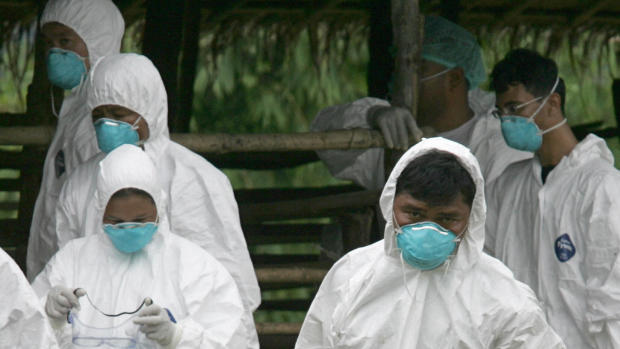Deadly superbug in L.A. sewage could end up in the ocean
The superbug known as CRE (carbapenem-resistant Enterobacteriaceae) is a growing public health concern, and now some scientists are raising alarms about what happens when it gets into sewage treatment plants.
CRE -- sometimes called the "nightmare bacteria" -- is resistant to traditional antibiotics like penicillin and an even stronger group of antibiotics called carbapenems. Now research shows that the superbug has a welcoming environment in which to proliferate in sewage plants, where wastewater gets treated before being discharged into streams, lakes and oceans.
The Los Angeles Times reports that last fall, scientists with the Environmental Protection Agency detected the bacteria in a sewage treatment plant in Southern California, thought to have been brought there with the millions of gallons of raw sewage from area hospitals, where the bug has been known to infect patients.
Although the Times reports that the treated water was not specifically tested for antibiotic-resistant bacteria, experts say it's possible that the treatment process didn't kill it all off. Chlorine wouldn't do it, Pedro Alvarez, a professor of environmental engineering at Rice University, told the paper.
"It's scary," Dr. James McKinnell, an infectious disease specialist from Harbor-UCLA Medical Center and the Los Angeles Biomedical Research Institute, told CBS News. "What you're seeing is more evidence of this type of bacteria setting up shop in our community."
According to the Centers for Disease Control and Prevention, CRE is a family of germs found normally in human intestines. When these bacteria spread outside the gut they can cause serious infections, including urinary tract infections, bloodstream infections, wound infections and pneumonia, especially in people with weaker immune systems. CRE may kill as many as 50 percent of those who become infected.
Hospital patients and individuals in long-term care facilities or nursing homes are the most likely to contract CRE. McKinnell said that now that CRE has been found in sewage treatment, it could put many more people at risk.
"An environmental source of CRE transmission is out in the general population now," McKinnell said. "This is clearly an emerging problem."
Superbugs infect more than two million people in the U.S. every year and kill at least 23,000, according to the CDC.
In the past, antibiotics would have killed most strains of bacteria. However, the problem of antibiotic-resistant bacteria has grown worldwide as a result of the overuse and abuse of antibiotics.
"We're kind of back to the era of not having antibiotics," McKinnell told CBS News.
McKinnell and colleagues are working with the CDC to research preventive measures to help reduce the burden of CRE and other drug-resistant bacteria in California and across the country.
"This is a national problem," McKinnell said. "The CDC reports this is an urgent public health threat."
